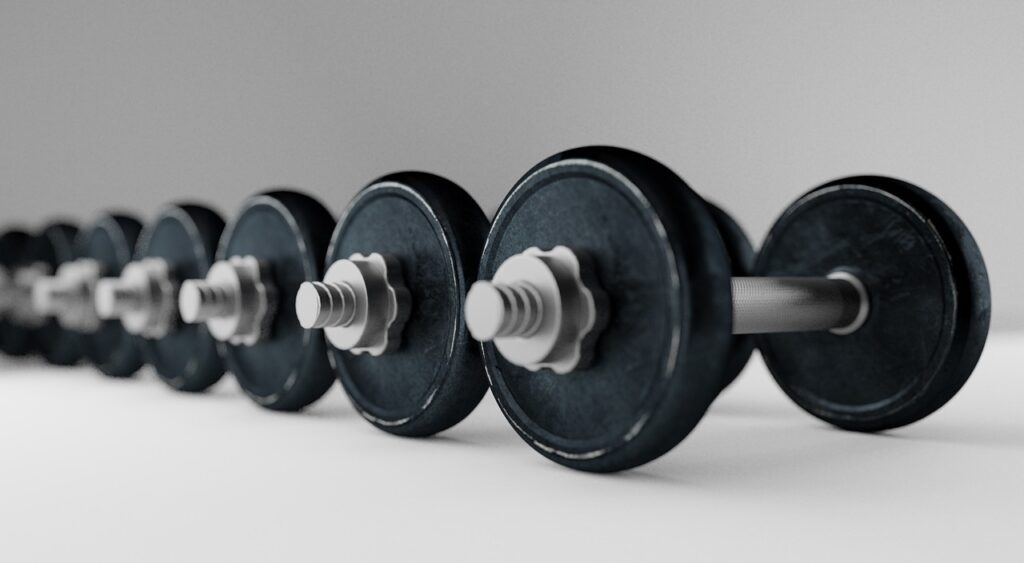Dumbbells vs. Machines: Unveiling the Superior Option for Building Strength
When it comes to building strength, one of the most debated topics in the fitness world is the choice between dumbbells and machines. Both options offer unique advantages and disadvantages, making it crucial to understand which option is more effective for developing strength. In this comprehensive article, we will explore the advantages and disadvantages of both dumbbells and machines, helping you make an informed decision to optimize your strength-building journey.
Advantages of Dumbbells:

Functional Strength and Range of Motion:
Dumbbells excel in promoting functional strength as they allow for a greater range of motion compared to machines. This helps engage multiple muscles and enhances overall athleticism.
Stabilizer Muscle Activation:
Using dumbbells requires greater stabilization, activating the muscles responsible for balance and coordination. This can lead to improved overall muscle coordination and stability.
Core Strength Development:
Many dumbbell exercises require core stabilization, leading to a stronger core and improved stability. Strengthening your core muscles can have positive effects on various functional movements.
Muscle Imbalance Correction:
Dumbbells enable independent movement for each side of the body, helping identify and correct muscle imbalances. This can prevent strength discrepancies and reduce the risk of injuries.
Disadvantages of Dumbbells:
Limited Isolation of Muscles:
Dumbbells may not provide the same level of muscle isolation as machines. If you have specific muscles that require focused attention for hypertrophy, dumbbells might not be the most optimal choice.
Technique and Form:
Performing exercises with dumbbells requires proper technique and form to maximize results and minimize the risk of injury. Beginners might find it challenging to maintain correct posture and alignment
Weight Progression:
Dumbbells typically have fixed weight increments, which might not be suitable for those looking to gradually increase resistance over time. This can limit progressive overload, a key factor in building strength.
Advantages of Machines:

Muscle Isolation and Hypertrophy:
Machines excel at isolating specific muscle groups, making them ideal for targeting individual muscles and promoting muscle hypertrophy. This is especially beneficial for bodybuilders or individuals focusing on aesthetic goals.
Controlled Movement Patterns:
Machines provide a controlled and guided movement pattern, reducing the risk of improper form or technique. This can be advantageous for beginners or individuals recovering from injuries.
Adjustable Settings:
Many machines offer adjustable settings, allowing users to modify the range of motion and resistance according to their specific needs. This versatility makes machines user-friendly and accessible to a wide range of individuals.
Injury Prevention:
Using machines with controlled movements can minimize the risk of injury associated with free weights. The guided path of motion reduces the likelihood of using incorrect form or compromising joint stability.
Disadvantages of Machines:
Limited Range of Motion:
Machines often restrict the natural range of motion, which can limit functional strength development. Some machines may not engage stabilizer muscles as effectively as free weights, leading to potential muscle imbalances.
Lack of Core Activation:
Certain machines may not engage the core muscles to the same extent as free weight exercises. This can limit the development of core strength and stability.
Less Functional Training:
While machines provide targeted muscle isolation, they may not translate well into real-life functional movements or sports-specific activities. Functional training often requires the use of free weights to simulate real-world movements.
In the battle between dumbbells and machines for strength development, both options have their advantages and disadvantages. Dumbbells offer functional strength, range of motion, and engage stabilizer muscles, while machines provide muscle isolation, controlled movements, and reduced injury risk. To make an informed decision, consider your training goals, experience level, and personal preferences. Beginners may benefit from starting with machines to establish proper form and technique before progressing to dumbbells. Alternatively, a combination of both dumbbells and machines can provide the best of both worlds, allowing for muscle isolation, functional strength, and overall development. Remember, the key to building strength lies in consistency, proper technique, and progressive overload, regardless of the equipment you choose.



